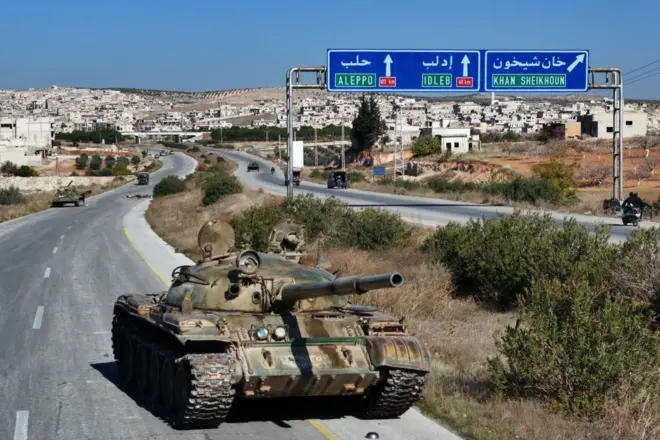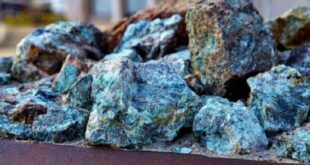محمد خليل
مع سقوط نظام الأسد في سوريا، انكشفت حقائق مروعة عن السجون والمعتقلات التي كانت تُستخدم كأدوات للقمع والترهيب. أصبحت هذه الأماكن، التي تم السيطرة على العديد منها، شاهدةً على حجم الفظائع التي ارتُكبت بحق المعتقلين.With the fall of the Assad regime in Syria, horrific truths have been revealed about prisons and detention centers that were being used as tools of repression and intimidation. These places, many of which have been controlled, have become testament to the scale of the atrocities committed against detainees.
يقدم هذا التقرير خريطة شاملة لأبرز السجون والمعتقلات، مستنداً إلى شهادات ناجين ومصادر موثوقة.This report provides a comprehensive map of the most prominent prisons and detention centers, based on the testimonies of survivors and reliable sources.
كانت الأجهزة الأمنية السورية، مثل إدارة المخابرات الجوية، شعبة المخابرات العسكرية، شعبة الأمن السياسي، وإدارة المخابرات العامة، مسؤولة عن إدارة المعتقلات واستخدام أساليب تعذيب ممنهجة.Syrian security agencies, such as the Air Force Intelligence Directorate, the Military Intelligence Division, the Political Security Division, and the General Intelligence Directorate, were responsible for managing detention facilities and using systematic torture methods.
ووفقاً لتقرير منظمة العفو الدولية الصادر في السابع من فبراير/شباط 2017 بعنوان “المسلخ البشري”، تضمنت هذه الأساليب الضرب المبرح، والحرمان من النوم والطعام، والصعق الكهربائي.According to Amnesty International’s report on 7 February 2017, The Human Slaughterhouse, these methods included severe beatings, sleep and food deprivation, and electric shocks.
- الشرع يتوعد بـ”محاسبة المتورطين في تعذيب الشعب السوري”Al-Sharaa vows to “hold accountable those involved in torturing the Syrian people”
بعد فتح المعتقلات، عُثر على وثائق وأدلة تدعم شهادات الناجين. فما هي أبرز هذه السجون؟ وما هو أبرز ما رواه من نجوا منها؟After the detention centers were opened, documents and evidence were found to support the survivors’ testimonies. What are the most prominent of these prisons? What are the most prominent stories of those who survived?
-
 “هل من كسر للبنية الدموية في سوريا؟”- القدس العربي”Is there a break in Syria’s bloody structure?” – Al-Quds Al-Arabiكيف ترى تركيا العملية العسكرية المتسارعة في سوريا؟How does Turkey see the accelerated military operation in Syria?
“هل من كسر للبنية الدموية في سوريا؟”- القدس العربي”Is there a break in Syria’s bloody structure?” – Al-Quds Al-Arabiكيف ترى تركيا العملية العسكرية المتسارعة في سوريا؟How does Turkey see the accelerated military operation in Syria? -
 مأزق إسرائيل في سوريا: بقاء الأسد بدعم إيراني أم تهديد متزايد من معارضة مسلحة؟Israel’s Predicament in Syria: Assad’s Survival with Iranian Support or a Growing Threat from an Armed Opposition?
مأزق إسرائيل في سوريا: بقاء الأسد بدعم إيراني أم تهديد متزايد من معارضة مسلحة؟Israel’s Predicament in Syria: Assad’s Survival with Iranian Support or a Growing Threat from an Armed Opposition? -
 سوريا: ما أسباب وأهداف الهجوم الذي تشنه المعارضة؟Syria: What are the causes and objectives of the opposition offensive?
سوريا: ما أسباب وأهداف الهجوم الذي تشنه المعارضة؟Syria: What are the causes and objectives of the opposition offensive?
تتضمن هذه القصة تفاصيل حساسة. يُرجى أخذ ذلك في الاعتبار.This story includes sensitive details. Please keep this in mind.
سجن عدرا (للنساء)Adra Prison (for women)

يقع سجن عدرا في ريف دمشق، وهو من أبرز السجون المخصصة للنساء في سوريا.Located in rural Damascus, Adra prison is one of the most prominent prisons for women in Syria.
ووفقاً لتقارير حقوق الإنسان الصادرة عن هيومن رايتس ووتش في 15 يونيو/حزيران 2015، كان السجن يضم أكثر من ألف سجينة ومعتقلةٍ خلال فترات الذروة.According to Human Rights Watch human rights reports released on June 15, 2015, the prison held more than 1,000 female prisoners and detainees during peak periods.
الناجيات من هذا السجن تحدثن عن الحرمان النفسي والجسدي والمعاملة المهينة، حيث كانت المعتقلات والسجينات يعشن في زنازين مكتظة تفتقر إلى أدنى مقومات النظافة.Survivors of this prison spoke of psychological and physical deprivation and degrading treatment, as detainees and prisoners lived in overcrowded cells that lacked the minimum hygiene.
في كتابها “خمس دقائق وحسب” (2006)، توثّق هبة الدباغ أيامها داخل زنزانة انفرادية، مشيرة إلى العزلة والعنف الذي تعرّضت له. وفي إحدى الحوادث التي ذكرتها، تم حرمانها من رؤية النور لمدة أسابيع كعقوبة جماعية لنزيلات السجن.In her book Just Five Minutes (2006), Heba al-Dabbagh documents her days in solitary confinement, recalling the isolation and violence she endured. In one incident she mentioned, she was denied access to the light of day for weeks as collective punishment for female prison inmates.
سجن صيدناياSednaya Prison

يقع سجن صيدنايا في شمال دمشق، وهو من أكبر السجون العسكرية وأكثرها قسوةً في سوريا. أُنشئ عام 1987، وتميّز بكونه موقعاً للإعدامات الجماعية والتعذيب الوحشي، وفق شهود العيان.Located in northern Damascus, Sednaya Prison is one of the largest and most brutal military prisons in Syria. Established in 1987, it has the distinction of being the site of mass executions and brutal torture, according to eyewitnesses.
ووفقاً لتقرير منظمة العفو الدولية في السابع من فبراير/شباط 2017، احتجز السجن الآلاف من المعتقلين والسجناء، وكان يعج بممارسات التعذيب المنهجي.According to an Amnesty International report on 7 February 2017, the prison held thousands of detainees and prisoners and was rife with systematic torture.
يسرد مصطفى خليفة، في روايته “القوقعة: يوميات متلصص” (2008)، تفاصيل تجربته الشخصية، معبّراً عن الألم النفسي والجسدي الذي عاشه.In his novel The Cochlea: Diary of a Voyeur (2008), Mustafa Khalifa details his personal experience, expressing the psychological and physical pain he experienced.
من بين الحوادث التي ذكرها، وصف كيف أُجبر على مشاهدة إعدام جماعي في الساحة الرئيسية للسجن، حيث كان الهدف بث الرعب في نفوس باقي السجناء والمعتقلين.Among the incidents he mentioned, he described how he was forced to witness a mass execution in the prison’s main square, where the aim was to spread terror among the rest of the prisoners and detainees.
فرع فلسطينPalestine Branch
يقع فرع فلسطين في جنوب دمشق، وهو أحد أكثر مراكز الاعتقال شهرةً بسوء السمعة في سوريا.Located south of Damascus, the Palestine branch is one of Syria’s most notorious detention centers.
أُنشئ في الستينيات ليكون مركزاً للاستجواب والتعذيب، حيث كان يحتجز مئات المعتقلين في زنازين ضيقة ومظلمة.It was established in the sixties as a center for interrogation and torture, where hundreds of detainees were held in cramped and dark cells.
بحسب تقرير المركز السوري للعدالة والمساءلة الصادر في 20 يوليو/تموز 2018، كُشف عن مئات الوثائق التي تثبت الفظائع التي ارتُكبت هناك.According to a July 20, 2018 SJAC report, hundreds of documents proving atrocities committed there were revealed.
عُرف الفرع بأساليب التعذيب الوحشية مثل التعليق من الأطراف والصعق الكهربائي.The branch was known for brutal methods of torture such as suspension from the limbs and electric shocks.
أحد الناجين، في مقابلةٍ مع قناة الجزيرة نُشرت في 12 مارس/آذار 2017، وصف كيف تعرّض للتجويع والإهانات المستمرة.One survivor, in an interview with Al Jazeera published on March 12, 2017, described how he was subjected to starvation and constant humiliation.
وفي شهادة أخرى، تحدّث الساعد عن تعرّضه للصعق بالكهرباء أثناء إجباره على الاعتراف بجرائم لم يرتكبها.In another testimony, al-Saed described being given electric shocks while being forced to confess to crimes he did not commit.
وبعد السيطرة على الفرع، كشفت الوثائق عن مئات الحالات التي تعرّضت لهذه الانتهاكات.After the branch was taken over, the documents revealed hundreds of cases of such violations.
فرع المخابرات العسكرية 291Military Intelligence Branch 291
يقع فرع المخابرات العسكرية 291 في قلب العاصمة دمشق، ويُعرف بأنه مركز للاعتقال والعزل الانفرادي.Military Intelligence Branch 291 is located in the heart of the capital, Damascus, and is known as a center for detention and solitary confinement.
كان هذا الفرع مخصّصاً للتحقيق مع المعتقلين السياسيين باستخدام أساليب تعذيب قاسية.This branch was dedicated to interrogating political detainees using harsh torture methods.
ووفقاً لتقرير منظمة هيومن رايتس ووتش الصادر في 10 مايو/أيار 2014، تم استخدام الضرب المبرح كوسيلة رئيسية للتعذيب، حيث كانت الزنازين تفتقر إلى التهوية والإضاءة المناسبة.According to a Human Rights Watch report of May 10, 2014, severe beatings were used as the main method of torture, as cells lacked proper ventilation and lighting.
سمير قنوع، في روايته “أنشودة البرد والحرية”، يروي تجاربه الشخصية التي أظهرت حجم المعاناة داخل هذا الفرع.Samir Qanou, in his novel “A Song of Cold and Freedom”, recounts his personal experiences that showed the magnitude of the suffering within this branch.
ومن بين المواقف التي سردها، وصف كيف تم تقييده بالسلاسل في وضعية التعليق لعدة أيام من دون طعام أو ماء، مما أدى إلى إصابته بجروح دائمة.Among the situations he recounted, he described how he was chained in suspension for several days without food or water, resulting in permanent injuries.
سجن تدمرPalmyra prison

يقع سجن تدمر في قلب الصحراء السورية بالقرب من مدينة تدمر الأثرية وكان يستخدم لاحتجاز المعتقلين السياسيين والعسكريين، حيث تعرضوا لإعدامات ميدانية وتعذيب جماعي.Palmyra prison is located in the heart of the Syrian desert near the ancient city of Palmyra and was used to hold political and military detainees, where they were subjected to summary executions and mass torture.
ووفقاً لشهادات موثقة في تقرير منظمة العفو الدولية عام 2016، كان السجن يضم مئات المعتقلين في ظروف غير إنسانية، مع استخدام الإهانات المستمرة كوسيلة لفرض السيطرة.According to testimonies documented in a 2016 Amnesty International report, the prison held hundreds of detainees in inhumane conditions, with constant insults used as a means of imposing control.
ويوثق فرج بيرقدار، في كتابه “خيانات اللغة والصمت” (1997)، تجربته المريرة في هذا السجن، واصفاً الرعب اليومي الذي عاشه. ومن بين الحوادث التي ذكرها، وصف مشهداً صادماً لإعدام جماعي نُفّذ من دون محاكمة في باحة السجن، حيث كان المعتقلون يجبرون على مشاهدة زملائهم وهم يُقتلون.In his book Betrayals of Language and Silence (1997), Faraj Bayraktar documents his bitter experience in this prison, describing the daily horror he experienced. Among the incidents he mentioned, he described a shocking scene of a mass execution carried out without trial in the prison courtyard, where detainees were forced to watch their colleagues being killed.
سجن تدمر، الذي أُنشئ عام 1966، أغلق في عام 2015، لكنه ظل مكاناً للإعدامات الميدانية والتعذيب الجماعي وفقاً لتقرير منظمة العفو الدولية.Palmyra prison, established in 1966, was closed in 2015 but remained a site of summary executions and mass torture, according to Amnesty International’s report.
الشخصيات المتهمة بالانتهاكاتPersonalities accused of violations
العقيد محمود معتوق: كان معتوق مديراً لسجن صيدنايا، حيث أشرف على الإعدامات الجماعية والانتهاكات الممنهجة.Colonel Mahmoud Ma’touq: Ma’touq was the director of Sednaya prison, where he oversaw mass executions and systematic abuses.
ووفقاً لتقرير منظمة العفو الدولية (7 فبراير/ شباط 2017)، أكدت شهادات عدة مسؤوليته المباشرة عن الانتهاكات.According to Amnesty International’s report (7 February 2017), several testimonies confirmed his direct responsibility for the violations.
العميد حافظ مخلوف: لعب مخلوف دوراً رئيسياً في فرع فلسطين، حيث قاد عمليات تعذيب ممنهجة.Brigadier General Hafez Makhlouf: Makhlouf played a key role in the Palestine branch, where he led systematic torture.
وتشير الوثائق المكتشفة بعد سقوط النظام، وفقاً لتقرير المركز السوري للعدالة والمساءلة (20 يوليو/ تموز 2018)، إلى تورطه في مئات الانتهاكات.Documents discovered after the fall of the regime, according to a report by the Syrian Center for Justice and Accountability (20 July 2018), indicate its involvement in hundreds of violations.
اللواء علي دوبا: كان دوبا مسؤولاً عن إدارة سجن تدمر، حيث أشرف على التعذيب الجماعي والإعدامات الميدانية.Major General Ali Duba: Duba was in charge of managing Palmyra prison, where he oversaw mass torture and summary executions.
وأكدت الأدلة المادية التي تم العثور عليها بعد تحرير السجن تورطه، وفقاً لتقرير منظمة العفو الدولية الصادر عام 2016.Physical evidence found after the liberation of the prison confirmed his involvement, according to a 2016 Amnesty International report.
الإحصائيات والانتهاكات بالأرقامStatistics and violations in numbers
يستحق الانتباه نهاية
في مقابلة مع تلفزيون سوريا، أعلن فضل عبد الغني، مدير الشبكة السورية لحقوق الإنسان، وهو يبكي: “كل المختفين قسراً الذين لم يُعثر عليهم حتى الآن، قُتلوا من قبل النظام السوري”، علماً أن أعمال البحث عن المختفين قسراً لا تزال جارية.In an interview with Syria TV, Fadel Abdel Ghani, director of the Syrian Network for Human Rights, declared in tears: “All the forcibly disappeared who have not yet been found, have been killed by the Syrian regime,” although the search for the forcibly disappeared is still ongoing.
وأضاف عبد الغني أن النظام أخطر عام 2018 أهالي 1,100 معتقل بوفاتهم في السجون، من دون تقديم تفاصيل عن أماكن الجثث أو أسباب الوفاة.In 2018, the regime notified the families of 1,100 detainees of their deaths in prisons, he said, without providing details on the whereabouts of the bodies or the causes of death.
ووفقاً لتقرير الشبكة السورية لحقوق الإنسان الصادر في أغسطس/آب 2024، فإن النظام السوري احتجز حوالي 136,614 شخصاً منذ عام 2011، من بينهم96,321 شخصاً في عداد المختفين قسراً.According to an August 2024 report by the Syrian Network for Human Rights, the Syrian regime has detained some 136,614 people since 2011, including 96,321 forcibly disappeared.
وتشير الإحصائيات إلى مسؤولية تنظيم داعش عن اختفاء 8,684 شخصاً، بينما تُحمَّل الفصائل المعارضة والجيش الوطني السوري مسؤولية 2,986 حالة اختفاء قسري، وقوات سوريا الديمقراطية 2,981 حالة، وهيئة تحرير الشام 2,246 حالة.Statistics indicate that ISIS was responsible for the disappearance of 8,684 people, while opposition factions and the Syrian National Army were responsible for 2,986 cases of enforced disappearance, the Syrian Democratic Forces 2,981 cases, and Hay’at Tahrir al-Sham 2,246 cases.
التقرير نفسه أشار إلى وجود 157,634 شخصاً بين معتقل ومختفٍ قسراً على أيدي أطراف الحرب.The same report noted that 157,634 people were detained or forcibly disappeared by warring parties.
ويُعتبر النظام السوري مسؤولًا عن 86.6 بالمئة من هذه الحالات، بينما تنقسم النسب المتبقية بين الأطراف الأخرى.The Syrian regime is responsible for 86.6 percent of these cases, while the remaining percentages are divided among other parties.
وفي ما يتعلق بالإعدامات، قدر تقرير منظمة العفو الدولية عام 2017 أن أكثر من 13 ألف شخص تم إعدامهم في سجن صيدنايا بين عامي 2011 و2015.Regarding executions, Amnesty International’s 2017 report estimated that more than 13,000 people were executed in Sednaya prison between 2011 and 2015.
أما في سجن تدمر، فتشير تقارير منظمة هيومن رايتس ووتش إلى أن أكثر من 90 بالمئة من المعتقلين تعرضوا للتعذيب المنهجي، بما في ذلك الحرمان من النوم والتجويع المتعمد.In Palmyra prison, Human Rights Watch reports that more than 90 percent of detainees have been subjected to systematic torture, including sleep deprivation and deliberate starvation.
وفي فرع فلسطين، وثّق المركز السوري للعدالة والمساءلة في عام 2018 وفاة أكثر من ألفي معتقل تحت التعذيب خلال العقد الأخير.In the Palestine branch, SJAC documented in 2018 the deaths of more than 2,000 detainees under torture over the last decade.
السجون مرآة النظامPrisons are the mirror of the system

أصبحت السجون السورية، بما حملته من قصص معاناة وانتهاكات، اليوم دليلاً حيّاً على عنف نظام انهار تحت وطأة الحقائق التي انكشفت.Syrian prisons, with their stories of suffering and abuse, are now living proof of the violence of a regime that has collapsed under the weight of the facts that have been revealed.
مع شهادات الناجين ووثائق المنظمات الحقوقية، يتضح أن هذه المعتقلات لم تكن مجرد مراكز احتجاز، بل مراكز لإسكات الحريات وقمع الأصوات المعارضة.With the testimonies of survivors and the documents of human rights organizations, it is clear that these detention centers were not just detention centers, but centers for silencing freedoms and suppressing dissenting voices.
ومع ذلك، فإن تحرير هذه السجون يفتح الباب أمام تساؤلات عميقة حول إمكانية تحقيق العدالة والمصالحة في مجتمع عانى طويلًا، ويبحث اليوم عن طريق نحو مستقبل يحترم حقوق الإنسان ويصون كرامته.However, the liberation of these prisons opens the door to profound questions about the possibility of achieving justice and reconciliation in a society that has long suffered and is now looking for a path towards a future that respects human rights and preserves human dignity.
 وجه أفريقيا رئيس التحرير: سحر رجب
وجه أفريقيا رئيس التحرير: سحر رجب



